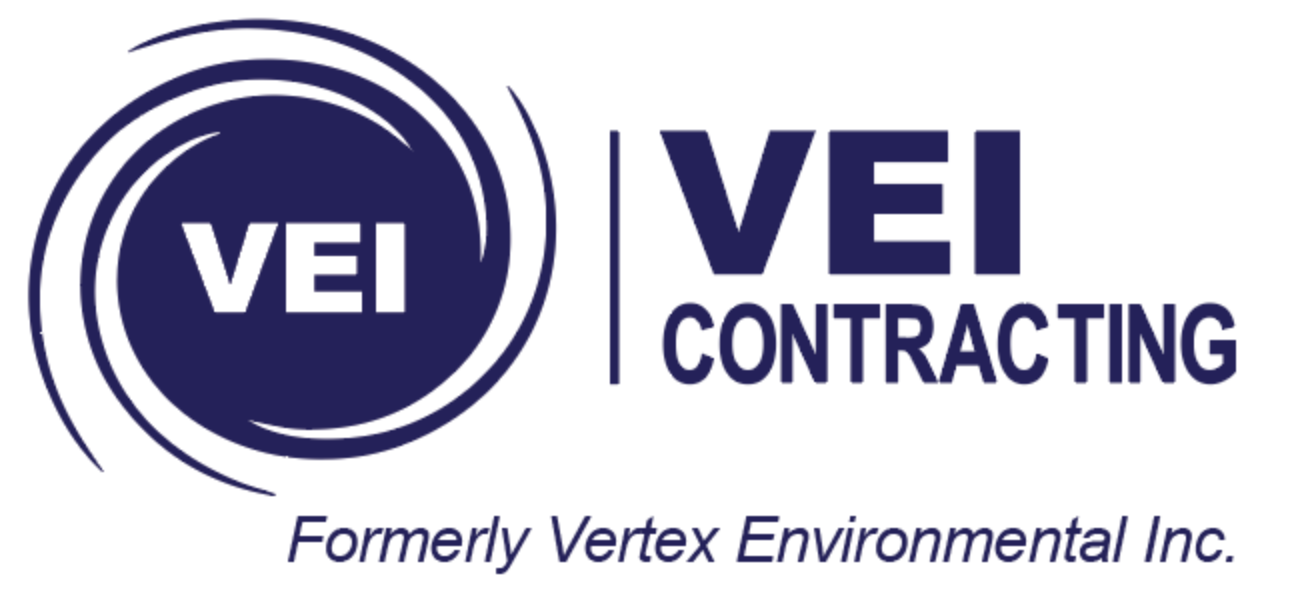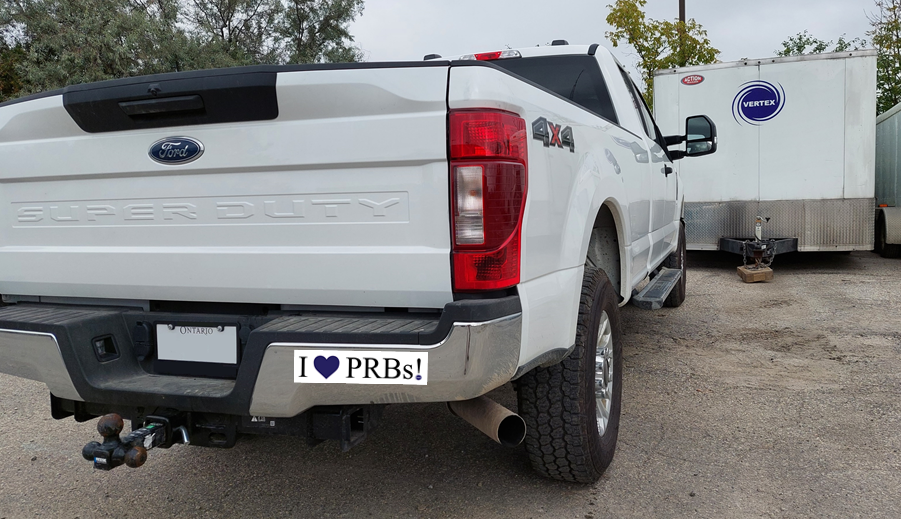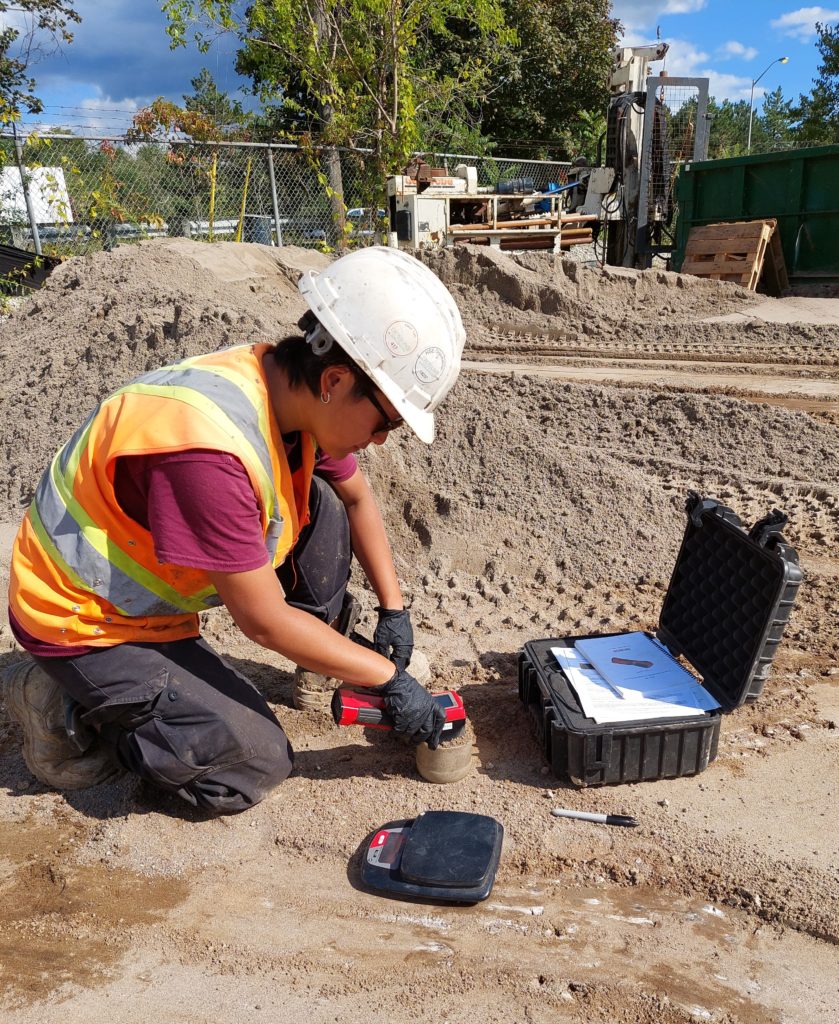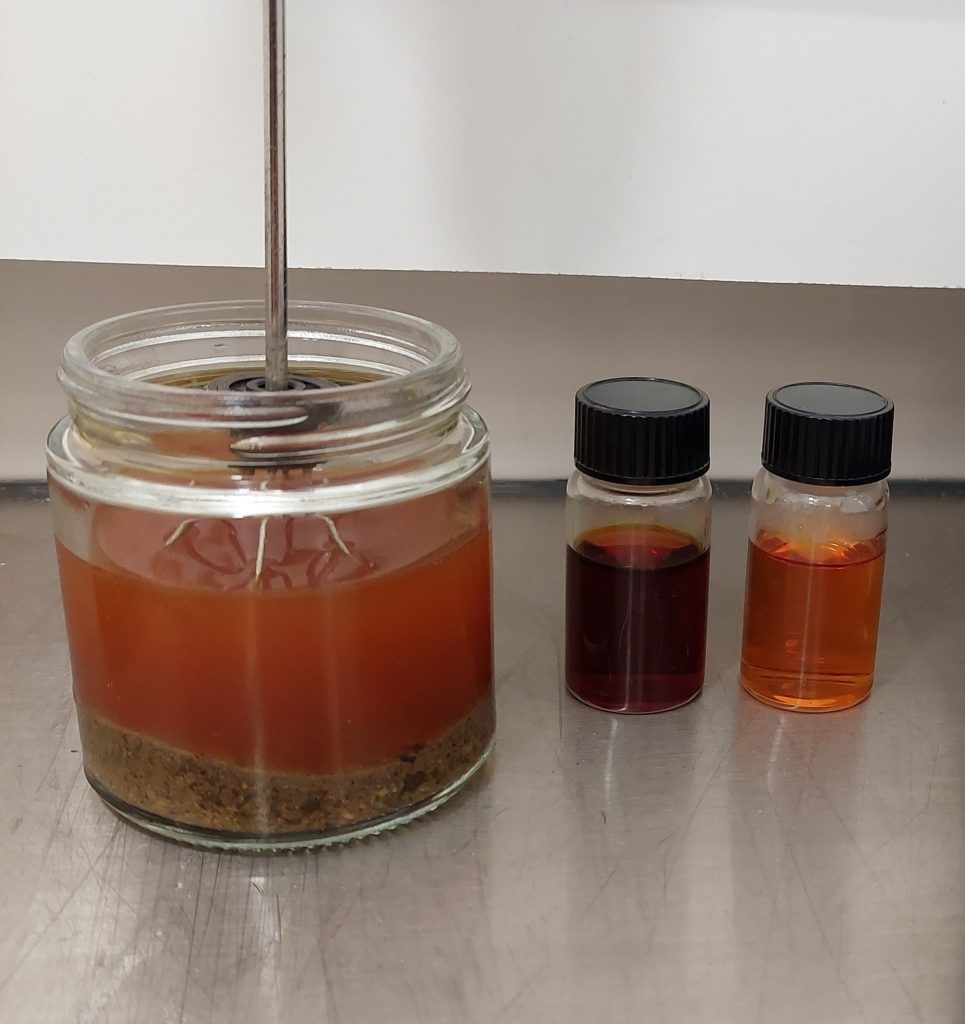Why We Love the New World of PRBs
What exactly are PRBs again?
A Permeable Reactive Barrier, or PRB, is an engineered zone installed below ground to remediate contaminated groundwater plumes. The “Permeable” part refers to the fact that they allow groundwater to flow through unimpeded. The “Reactive Barrier” part indicates that contaminants react with the media within the PRB, being destroyed or removed in the process, and are prevented from migrating further. When designed and installed properly, PRBs are a truly passive and effective barrier to contaminant migration and represent an essential tool for environmental practitioners.
Zero Valent Iron (ZVI) based PRBs, or “Iron Walls”, have long been a staple in the environmental remediation industry to passively treat not only chlorinated solvents, but also heavy metals, and other groundwater contaminants. There have also been many subsequent advancements in PRB technology, with new reactive media, remediation capabilities and installation techniques developed. We’ve talked about PRBs in several past newsletters, and you can brush up on the basics here:
Here we are a few years later and we thought it was about time we provided an update on how far PRB technology has progressed since they were first introduced way back in the 1990s, and even since we last reported on them in 2017, and why we love PRBs even more today.
Continue reading to learn more about:
- Streamlined Bench-Scale PRB Design Testing
- Installation Techniques for PRBs in Fractured Bedrock
- New QA/QC Test Methods for PRB Media (including one for AC-based amendments)
You’ll also find snapshots of some recently completed PRB projects that we hope will inspire you to love PRBs too (as if you already didn’t)!
Streamlined Bench-Scale PRB Treatability Testing
Flow-through column treatability studies take actual samples of contaminated groundwater collected from a project site and pump it through test columns loaded with remedial amendments at conservative groundwater flow rates to simulate PRB performance in the field. The effects of amendment concentration, combination and contact time can all be assessed.
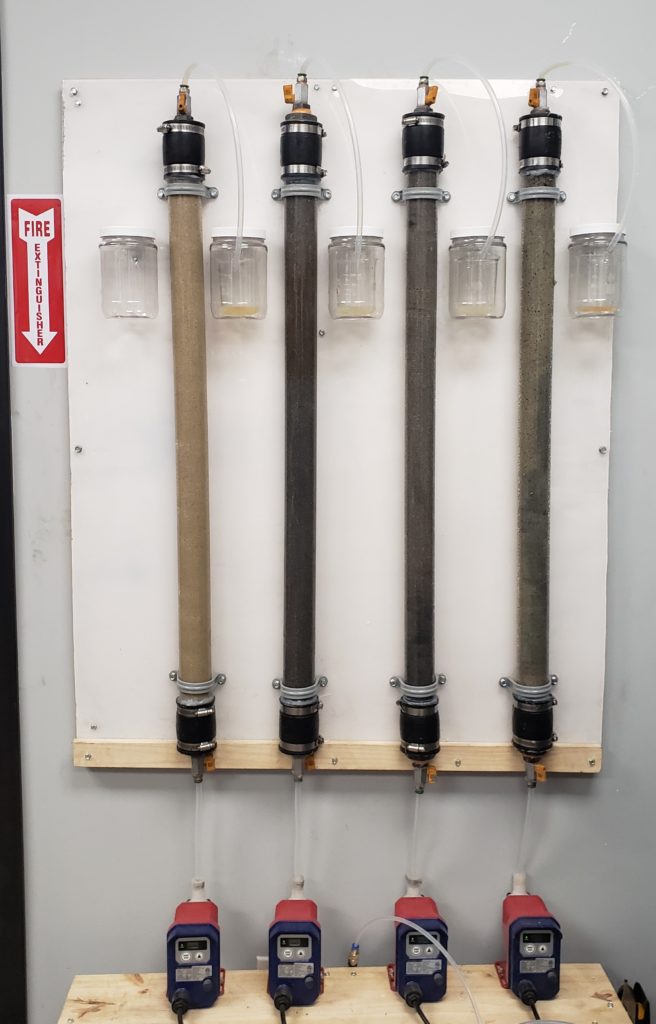
Testing a Variety of Potential PRB Amendments using Flow-Through Columns
“Simulated” groundwater can also be created by spiking water samples with the contaminants of concern at design concentrations if actual samples of impacted groundwater are not available. The materials used in constructing the columns are also selected to be non-reactive with the contaminants, and even zero-headspace conditions can be maintained for volatile constituents!
Directly evaluating the treatment efficacy of various theoretical PRB designs at bench-scale helps to refine full-scale PRB design; not only by identifying the preferred remedial admixture, but also by determining the expected degrees and rates (half lives) of contaminant destruction/removal as the water passes through the PRB. This testing bolsters a more detailed PRB design that can be installed at full-scale with greater certainty and confidence in its performance.
Vertex routinely completes flow-through column studies on contaminants as diverse as:
- Petroleum Hydrocarbons
- Chlorinated Solvents including tetrachloroethylene (PCE), trichloroethylene (TCE), cis-1,2-dichloroethylene and vinyl chloride, etc.
- Heavy Metals, like arsenic, cadmium, chromium, lead, manganese, zinc, etc.
And we are currently gearing up for testing on per- and polyfluoroalkyl substances (PFAS) and landfill leachate (nitrate, metals, etc.).
This testing is fast, accurate, relatively inexpensive and is well on its way to becoming sine qua non for many environmental consultants involved in PRB design.
Installations Techniques for PRBs in Fractured Bedrock
PRB installations were traditionally devised to be “cut and fill” trenches, where remedial amendments were mixed with sand and directly placed into trenches advanced by traditional excavation equipment, sometimes requiring sidewall support via trench boxes or even biopolymer slurries. Deeper PRB installations (greater than about 6 m) that start to get beyond the reach of common excavation equipment, those in close proximity to buildings and property lines that might pose structural concerns, and in the vicinity of underground utility networks can make trenched PRBs complicated and expensive to install. Injected PRBs are often employed in these situations and Vertex has been routinely installing PRBs in this manner for well over a decade.
. 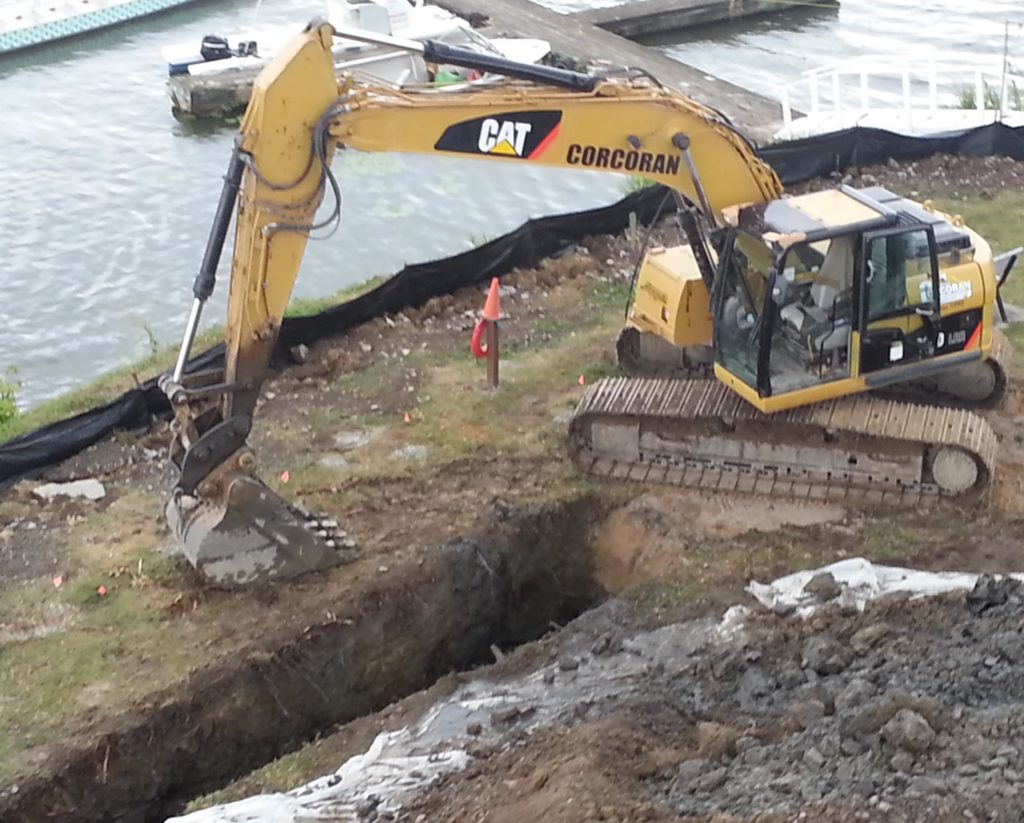
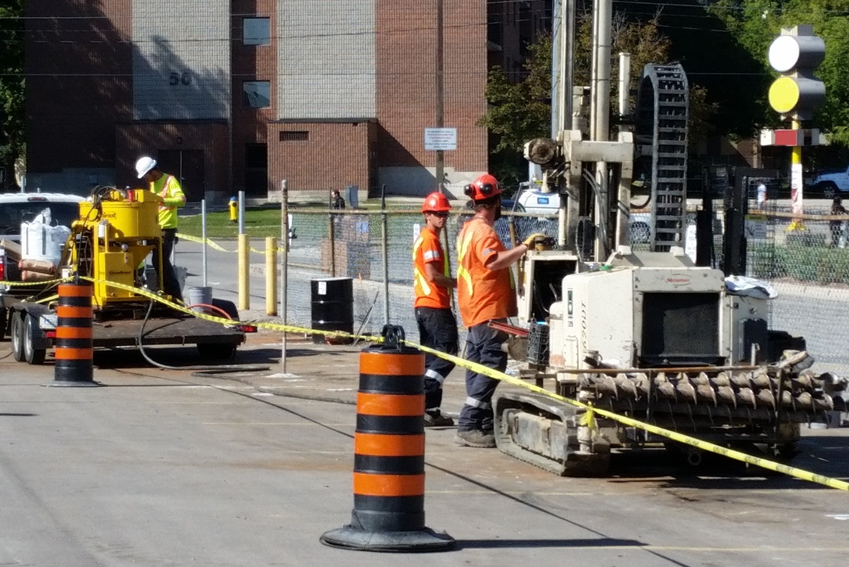
Traditional Trenching vs Injection PRBs Along Property Lines
But what about PRB installations in bedrock?
PRB installations at sites where the contaminated aquifer was present within the bedrock were thought to be at worst impossible or at best impractical. (At least they used to be thought of as such until recently.) By adopting technology from the oil and gas industry, PRBs can now be installed in bedrock using pressure-packer assemblies to inject the desired remedial amendments throughout the targeted fracture network and bedding planes.
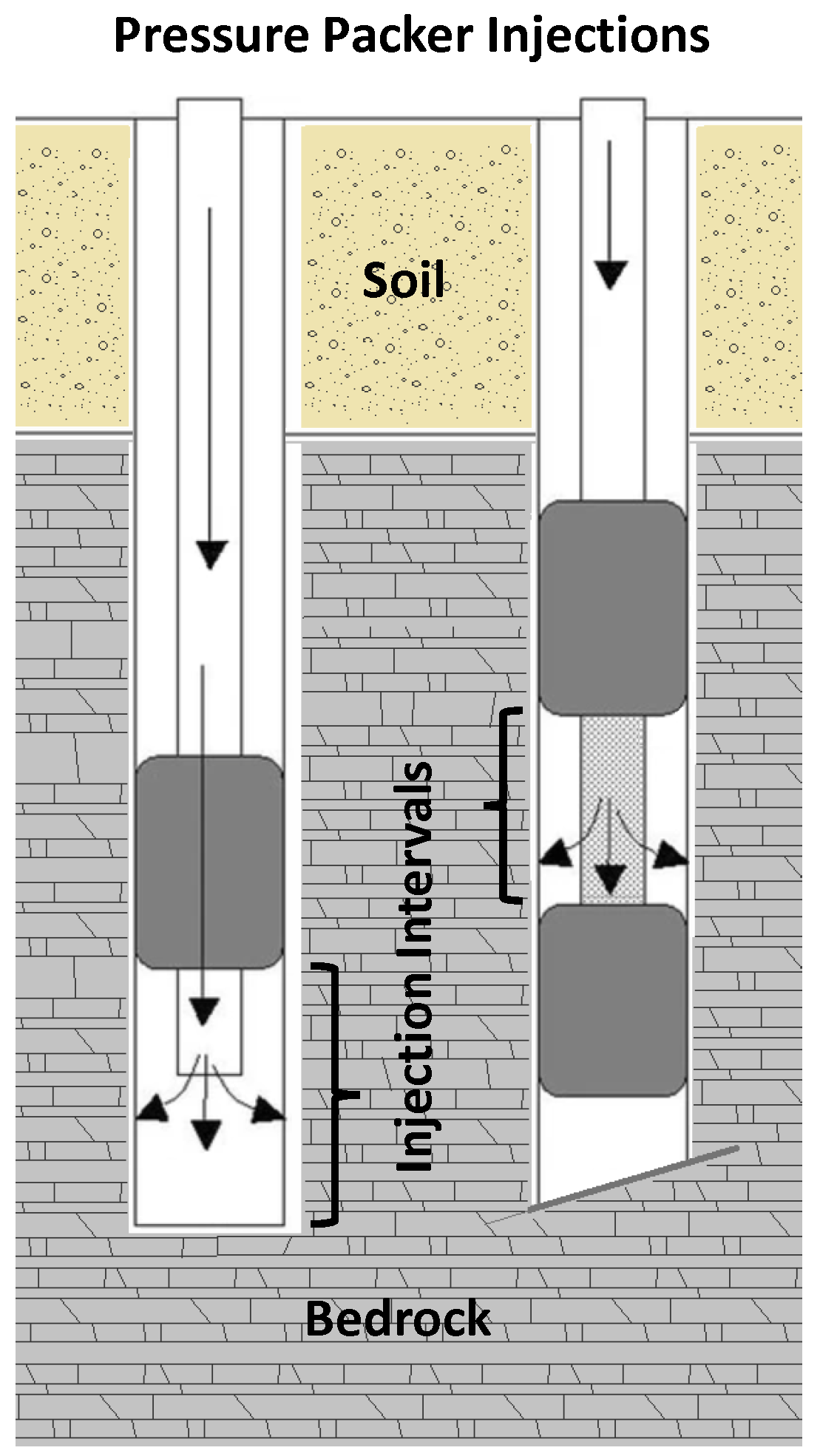
Remedial Amendments can be injected into Bedrock Using Pressure-Packer Systems to Form PRBs
This injection approach works by combining high-capacity injection pumps with dual pressure-packers to isolate discrete vertical intervals for the injection of remedial amendments. Open boreholes are installed into the bedrock, the pressure packer-assembly is lowered into the boreholes, inflated to seal off the targeted depth ranges, and the remedial amendments are injected under high pressure out into the bedrock aquifer. Much higher pressures (compared to typical injection wells) can be achieved via this approach, resulting in larger radii of influence and fewer injection points. A variety of long-lasting particulate remedial amendments such as ZVI and Trap and Treat® BOS 100® and BOS 200® have successfully been injected using this approach.
All of this means that managing plumes of contaminated groundwater in bedrock using PRBs, in addition to overburden soils, is now a viable remedial/risk management solution.
New QA/QC Test Methods for PRB Media
When installing PRBs, it’s important to know that the correct amount of remedial amendment has been added and is evenly distributed throughout the PRB. There used to be three primary ways of doing this:
- Amendment mass tracking: the mass(es) of remedial amendment mixed with the mass of soil/sand fill
- Visual assessment: does the final remedial admixture appear to be homogeneous?
- Magnetic separation testing: measuring the mass of ZVI in a sample of admixture by separation using a magnet
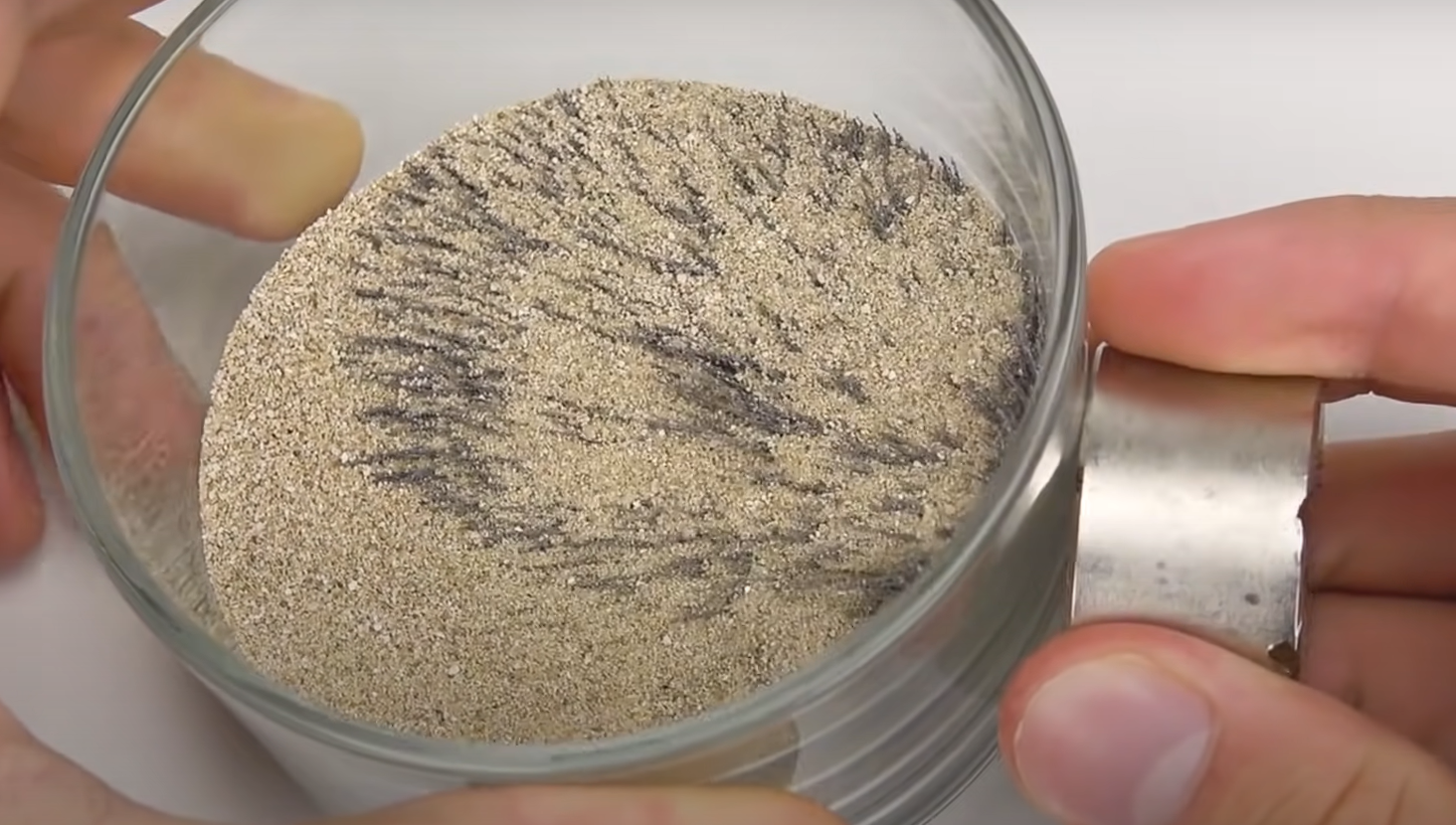
Magnetic Separation of ZVI from Sand (Old School Method)
The last approach represented a useful quality assurance/quality control (QA/QC) test to determine the bulk ZVI concentration and variability of ZVI concentrations over multiple samples or batches of admixture. However, magnetic separation testing was often slow, cumbersome and not overly accurate. Plus, it couldn’t work for any activated carbon-based remedial amendments.
Rapid concentration and uniformity checks play a crucial role in cut and fill PRBs. After all, there’s no point in installing a PRB if the remedial amendment is not properly distributed in the subsurface and doesn’t fully intersect the contaminant plume in the groundwater at the design concentration! Real-time measurements of the admixtures completed on-site and throughout the mixing process should minimize the mixing time, confirm amendment concentration, and help ensure uniform amendment distribution. With these goals in mind, Vertex recently developed two new rapid, field-deployable QA/QC procedures for PRBs: one to quantify ZVI concentrations in mixtures and one to quantify the concentration of activated carbon-based amendments in mixtures.
Magnetic Susceptibility QA/QC Technique
Just like everyone else, Vertex used to employ the traditional magnetic separation QA/QC testing procedure for quantifying the concentration of ZVI in sand/soil mixtures. But the method had its drawbacks, as noted above.
We have now developed a method to replace the “old school” magnetic separation testing by measuring the magnetic susceptibility of ZVI-containing remedial admixtures and correlating those readings to known concentration standards. Hand-held magnetic susceptibility meters require only seconds to record these extremely accurate measurements. Based on rigorous lab and field testing, site-specific, accurate calibration curves are developed that can be used to translate these readings into ZVI percentages for concentrations ranging from below 0.5% to greater than 35% by weight.
Magnetic Susceptibility Testing of ZVI in Sand (New and Improved Method)
Dye Adsorption QA/QC Technique
Unlike ZVI, previous QA/QC testing for AC-based remedial amendment admixtures were limited to mass tracking and visual assessment only. There was no equivalent “magnetic separation” test for AC. Therefore, Vertex undertook the development of a new, field-compatible method to quantify the AC concentration of a remedial admixture that takes advantage of AC’s high organic compound absorption capabilities.
This proprietary method involves mixing a dye solution with the admixture containing an AC-based remedial amendment and measuring the concentration of dye before and after exposure to the admixture for a set period of time. Rigorous lab and field tests are used to develop site-specific calibration curves to accurately translate the degree of dye absorption of a mixture to the corresponding AC concentration. This new QA/QC test is sufficiently portable and rapid that it can be used to perform uniformity and concentration checks in real-time in the field on stockpiled batches of remedial admixtures intended for emplacement in trenched PRBs. Detection limits vary based on the type of AC-based amendment and background soil/sand media but are consistently below 0.75% by weight. Perfect for assessing the emplacement of Trap and Treat® BOS 100® and BOS 200® to form PRBs!
Dye Adsorption QA/QC Testing of Activated Carbon (AC) in Sand (Innovative New Method)
Snapshots of Recent PRB Projects Completed by Vertex:
- Full-scale combined trenched (central portion of plume with high concentrations) and injected (peripheral edges of plume with lower concentrations) ZVI PRB to treat chlorinated solvents. The PRB extends over 350 meters in length, up to 9 m deep, and is one of the longest ZVI-based PRBs installed in Canada to date. On-site magnetic susceptibility QA/QC field testing completed.
- Full-scale implementation of a cut and fill PRB containing Trap & Treat® BOS 200 to treat a plume of petroleum hydrocarbons, including the installation of horizontal injection well infrastructure to facilitate supplemental TEA (terminal electron acceptor) replenishment injections. Dye adsorption QA/QC testing was used to validate the admixture prior to emplacement.
- Full-scale installation of a 2-stage, cut and fill PRB containing calcarious stone and ZVI to treat a plume of heavy metals in groundwater, including arsenic, cadmium and zinc. Flow-through column testing was used to provide proof-of-concept and then perfect the design before full-scale implementation.
- Full-scale restoration of a trenched ZVI PRB (completed by others) that was experiencing breakthrough for vinyl chloride (VC) via injection of supplemental Trap and Treat® BOS 100®. Flow-through column testing was completed to evaluate the effectiveness of treating the plume using Trap and Treat® BOS 100® and demonstrate that generic groundwater standards for VC could be achieved.
- Full-scale injection of Trap & Treat® BOS 200® and KB-1® PRB to replace a previously injected, alternate AC-based product injected PRB (completed by others) that was never successful in remediating a plume of petroleum hydrocarbons and 1,2-dicloroethane in groundwater. Off-site generic groundwater standards were achieved.
- Pilot-scale injection of ZVI into fractured bedrock to assess the feasibility of treating a plume of hexavalent chromium in groundwater using a PRB of this type. Bench-scale testing was previously completed using contaminated groundwater samples collected from the site to narrow down potential remediation approaches.
After reading your way through this latest PRB newsletter we hope you will agree that recent technological advances in the design, installation and verification of PRBs has come a long way since the days of the first “iron wall” and that, if you don’t already love PRBs, you’re interested enough to explore a possible relationship between your site and one. Who knows – a PRB might just turn out to be the love of your site! As always, feel free to contact us at info@vertexenvironmental.ca if you have any questions about PRBs.
